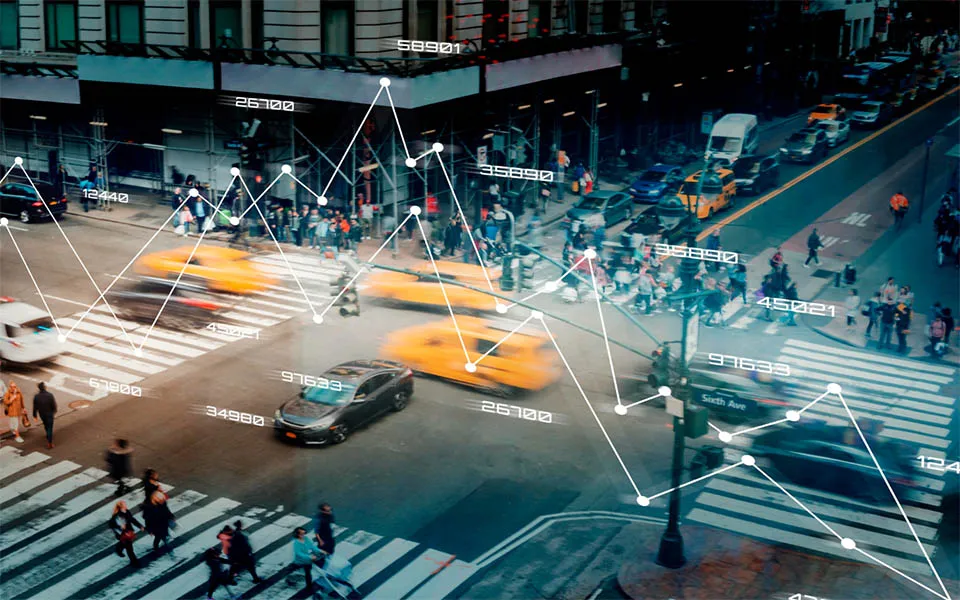CBRS vs. Wi-Fi: Choosing the Optimal Solution for Your Organization
In today’s rapidly evolving digital landscape, organizations are faced with a crucial decision when it comes to implementing wireless connectivity solutions. While traditional Wi-Fi networks have long been the standard for wireless connectivity, the emergence of Citizens Broadband Radio Service (CBRS) presents a compelling alternative for enterprises seeking interference-free communication and predictable performance within their network infrastructure. In this comprehensive guide, we will delve into the key differences, features, and benefits of CBRS and Wi-Fi, enabling you to make an informed decision for your organization.

Understanding CBRS:
CBRS, short for Citizens Broadband Radio Service, is a novel radio spectrum designated by the Federal Communications Commission (FCC) in the United States. This spectrum opens up new opportunities for private organizations to establish their cellular wireless networks independently, without relying on commercial cellular network plans. The CBRS band operates within the 3.55 GHz to 3.7 GHz frequency range, allowing it to coexist seamlessly with existing Wi-Fi networks.
CBRS Comprises Three Key Tiers:
Incumbents: This tier includes government entities and existing licensed users, who have primary access rights to the spectrum.
Priority Access License (PAL): PAL holders enjoy secondary access rights, providing them with a more reliable spectrum allocation than the General Availability Access tier.
General Availability Access (GAA): The GAA tier offers unlicensed access to the CBRS band, making it particularly attractive to enterprises looking to establish private cellular networks.
Organizations can leverage the CBRS band to deploy private LTE and 5G wireless networks within the GAA tier. This is achieved by using cellular wireless access points that register themselves with FCC-certified Spectrum Access Service (SAS) systems. With this autonomy, companies gain the ability to create independent networks, offering services parallel to commercial Wi-Fi and public mobile network connectivity options.
CBRS vs. Wi-Fi: Operational Mechanisms:
CBRS and Wi-Fi operate on distinct principles, each tailored to suit specific use cases and requirements. Here’s an overview of how they differ:
Access Control: In the CBRS band, devices must obtain permission before broadcasting, even in licensed tiers. This rigorous access control, mandated by the FCC, minimizes interference and optimizes broadcast transmission.
Spectrum Management: CBRS employs Spectrum Access Service (SAS) systems, which are cloud-based spectrum coordinators responsible for managing power assignments and spectrum availability for each device. To transmit on the CBRS network, cellular access points must be FCC certified and capable of communicating with the SAS.
Infrastructure: CBRS and Wi-Fi both use access points, extenders, and antennas to construct their respective radio access networks. However, private cellular technology, such as CBRS, enables higher transmit power outdoors and allows for lower data rates for device connectivity, resulting in broader coverage with less infrastructure.
Interference Protection: While CBRS networks have built-in mechanisms to protect against interference, Wi-Fi networks lack such safeguards. Overlapping Wi-Fi networks can cause interference, necessitating each Wi-Fi network to implement its RF management algorithms.
Network Segmentation: Both CBRS and Wi-Fi support public and private network access. In a Wi-Fi environment, network segments for guest users/devices can be created, allowing them to access the internet without being on the same subnet as the corporate network. In CBRS, this is achieved through a neutral host service, which provides access to mobile network services for MNO subscribers based on security and QoS policy.
Handoff and Mobility: Private cellular networks, powered by CBRS, offer improved handoff capabilities, ensuring seamless transitions between cellular access points. Wi-Fi networks, on the other hand, rely on mobile devices to make decisions about switching between radios.
CBRS vs. Wi-Fi: A Comparative Analysis
Now, let’s conduct an in-depth analysis of CBRS and Wi-Fi, comparing their fundamental network services and capabilities in various aspects.
Security:
– CBRS relies on SIM technology for device authentication and network access, enhancing security by eliminating the vulnerability of shared or cracked passwords.
– Wi-Fi security depends on encryption, network segmentation, and authentication methods, such as certificate-based RADIUS authentication.
Capacity:
– CBRS networks can efficiently manage traffic for connected devices, as all traffic is scheduled by the infrastructure, minimizing collisions and random access contention.
– Wi-Fi networks, while easy to implement, are subject to device requests for access to radio resources at random intervals, reducing predictability in high-density scenarios.
Quality of Service (QoS):
– Private cellular networks on the CBRS band offer granular control over traffic and inherent service level agreements for latency, throughput, and packet error rate.
– Wi-Fi enables segmentation of applications and devices for QoS but lacks granular service level definitions.
Latency:
– CBRS networks maintain low and predictable latency, even during congestion, making them suitable for IoT devices and low-latency applications.
– Wi-Fi can experience latency spikes during congestion, potentially affecting real-time applications.
Coverage and Mobility:
– Private cellular networks offer wider coverage, especially for mobile and IoT devices, with the ability to maintain connectivity at lower data rates.
– Wi-Fi devices require higher data rates and may experience disconnections at lower rates, limiting coverage.
Speed:
– Both CBRS and Wi-Fi networks offer competitive speeds, with Wi-Fi capable of reaching up to 1 Gbps and 4G/5G cellular networks offering speeds ranging from 25 Mbps to 1 Gbps.
Cost:
– For outdoor environments, CBRS-based networks can provide significant cost savings due to larger coverage areas.
– Indoors, the cost of a private cellular network, when using cloud networking solutions, can be comparable to Wi-Fi infrastructure. Businesses using commercial LTE services may face fluctuating carrier fees, which are eliminated in a private CBRS environment.
Choosing the Right Solution:
In conclusion, the choice between CBRS and Wi-Fi depends on your organization’s specific needs and objectives. Here are some key considerations to help you make an informed decision:
- Wi-Fi: Wi-Fi excels in providing fast and convenient wireless access to a high density of devices and users. It is ideal for standard enterprise environments and offers cost-effective connectivity for a wide range of devices.
- CBRS: CBRS offers interference-free communication, high security through SIM authentication, and predictability in performance, making it well-suited for critical infrastructure within enterprise environments. CBRS, when complemented with technologies like Celona’s MicroSlicing, provides granular control over airtime resources, allowing for demanding service level requirements for latency, throughput, and packet error rate.
Moreover, the fact that CBRS and Wi-Fi can coexist in the same space allows organizations to scale their networks effectively, utilizing CBRS for specific devices and applications that demand an express lane of wireless connectivity.
The Horizon Powered Solution
Horizon Powered collaborates with enterprise organizations to deliver 5G CBRS devices as a seamless turnkey 5G LAN solution.
Horizon Powered leverages cloud networking principles to provide a hassle-free experience when implementing private mobile networks. Onboarding for a Horizon Powered 5G LAN can seamlessly integrate with existing wireless and IT infrastructure, ensuring minimal disruption to business operations.
Effortless deployment of cellular access points from Horizon Powered throughout the campus allows for quick network expansion. Continuous proactive monitoring within the Horizon Powered network guarantees that network Service Level Agreements (SLAs), including throughput and latency requirements, are consistently met for critical applications.
If you’re preparing your network for the future, Horizon Powered is here to assist you. Contact us and we will put you through our team of experts to custom fabricate a solution / plan to estimate your Horizon Powered 5G LAN.
Conclusion
In conclusion, the decision between CBRS and Wi-Fi is a critical one that should align with your organization’s unique requirements. Consider the factors of security, capacity, QoS, latency, coverage, mobility, speed, and cost to make an informed choice. Whether you opt for CBRS or Wi-Fi, both technologies offer valuable wireless connectivity solutions, and the right decision will ultimately depend on your specific use cases and strategic objectives.








